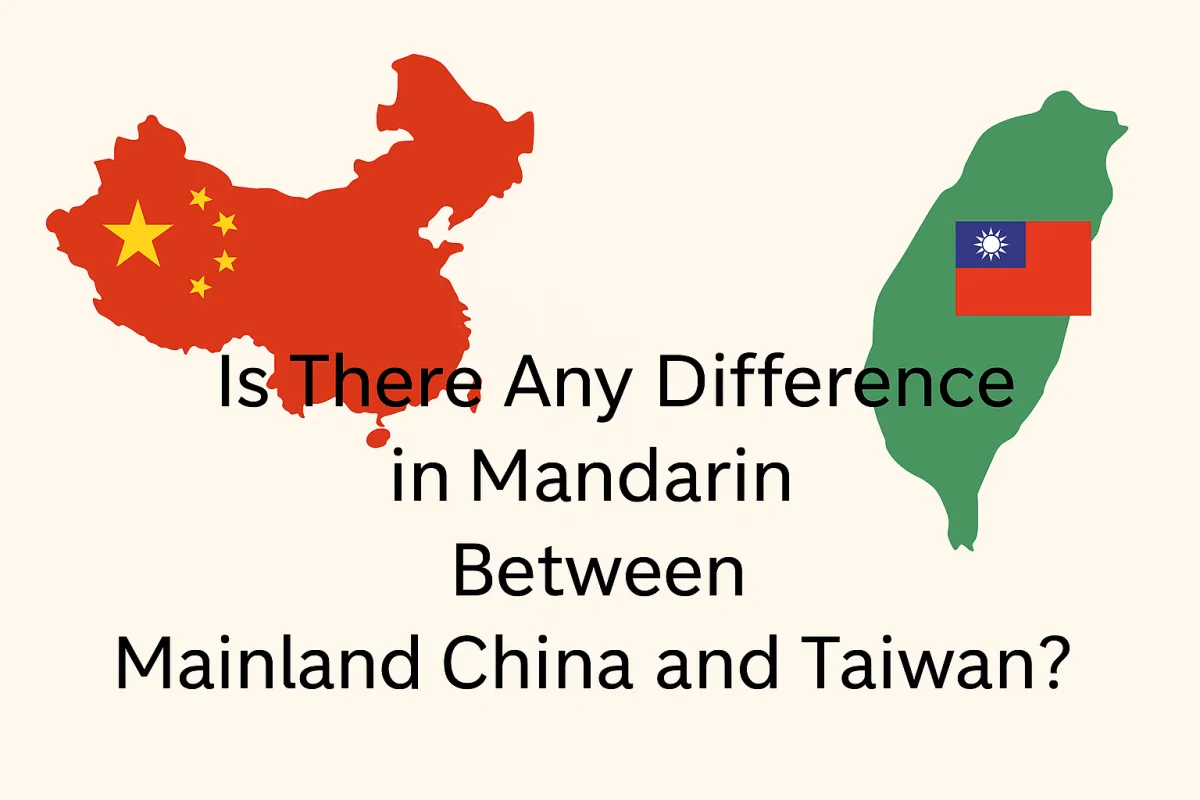
Is There Any Difference in Mandarin Between Mainland China and Taiwan?
Is There Any Difference in Mandarin Between Mainland China and Taiwan?
If you’re learning Mandarin, you may have noticed that there are references to Mainland Chinese Mandarin and Taiwanese Mandarin. While both use the same foundational language, there are key differences in pronunciation, vocabulary, writing system, and even tone.
So, is Mandarin in China and Taiwan the same?
The answer is: mostly yes—but with noticeable differences. Let’s explore them.
1. Writing System: Simplified vs. Traditional
This is the most visible difference.
Mainland China uses Simplified Chinese characters (简体字) — created in the 1950s to boost literacy by reducing stroke count.
Taiwan uses Traditional Chinese characters (繁體字) — which preserve the original, more complex forms.
Example:
“Love” in Simplified: 爱
“Love” in Traditional: 愛
✅ If you plan to read newspapers or books from Taiwan, learning Traditional characters is essential.
✅ For business and communication in Mainland China, Simplified characters are the norm.
2. Pronunciation and Accent
Both regions use Mandarin (普通话 / 國語), but the pronunciation and tone usage differ slightly.
Taiwanese Mandarin has a softer, more melodic tone and often maintains full tone contours.
Mainland Mandarin, especially from northern regions, can sound more clipped and nasal.
Some consonants may also differ:
The “zh”, “ch”, and “sh” sounds in Mainland Mandarin may be pronounced closer to “z”, “c”, and “s” in Taiwan.
🎧 It’s similar to the difference between American and British English accents—mutually intelligible, but with a distinct flavor.
3. Vocabulary Differences
Just like English varies between the U.S. and the U.K., Mandarin differs regionally in word choice and slang.
✅ The core meaning is still clear, but regional vocabulary can cause minor confusion at first.
4. Grammar and Formality
The grammar is nearly identical, but:
Taiwanese Mandarin tends to be more formal in tone—especially in writing and media.
Mainland Mandarin has more influence from spoken language, especially in casual contexts.
For example, Taiwanese Mandarin might use polite particles like 您 (nín) or 請 (qǐng) more often.
5. Romanization Systems
Mainland China uses Hanyu Pinyin, the most widely used romanization system.
Taiwan used to use Zhuyin (Bopomofo) for learning pronunciation and still teaches it in schools.
🧠 For learners, Pinyin is more common worldwide, but Zhuyin is useful if you’re learning in Taiwan.
So, Which Should You Learn?
It depends on your goals:
👔 Planning to work or live in China? → Focus on Simplified Mandarin with Mainland pronunciation.
🎓 Studying in Taiwan or interested in traditional culture? → Learn Traditional Mandarin with Taiwanese usage.
🌏 Want to be globally adaptable? → Exposure to both is ideal—most learners start with Mainland Mandarin, then explore the Taiwanese variant later.
In Summary
Final Thoughts
Mandarin is a shared language across both Mainland China and Taiwan, but like any language used by different communities, it has developed regional nuances. Both versions are beautiful, functional, and rich in culture.
So whichever version you learn first—just know you’re on the right track to mastering one of the world’s most influential languages.
